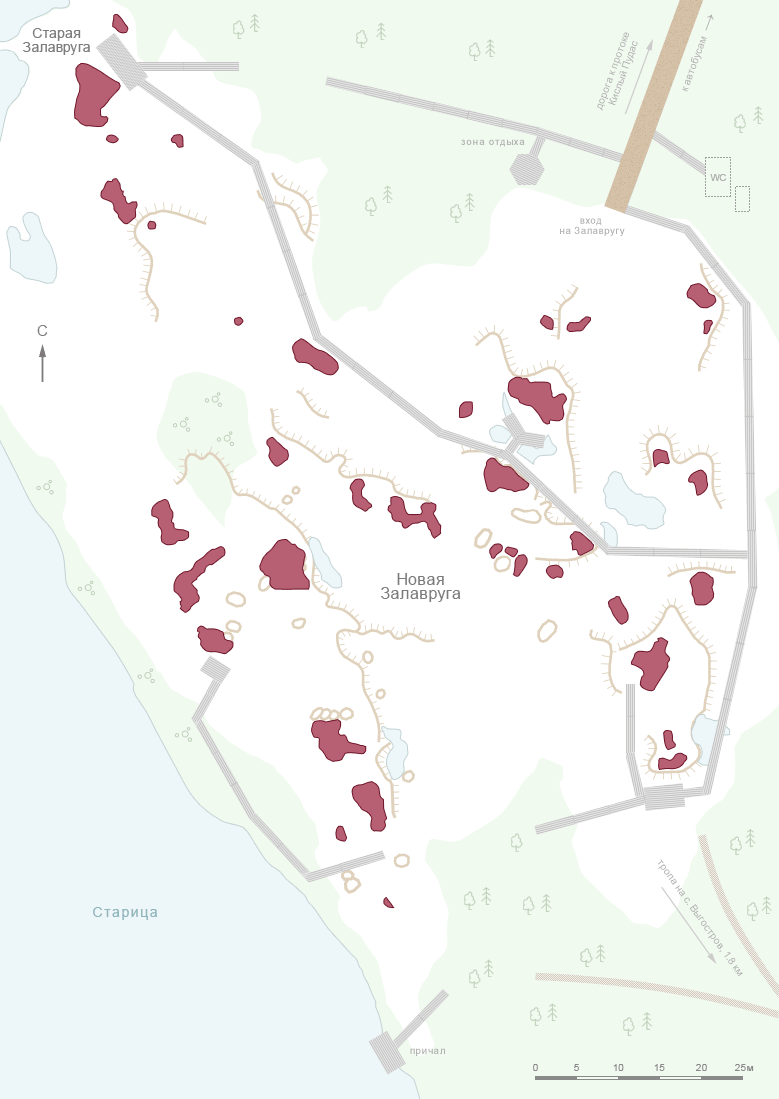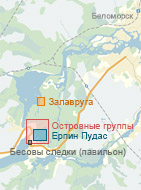Zalavruga Rock Engravings
A great number of Zalavruga engravings prove that the northern-European Neolithic man was a true creator. Obviously, Zalavruga used to be the center of Neolithic people’s spiritual life and they held their ceremonies and actions at the petroglyph sites.
Studying these engravings we can learn about ancient people’s life style. All in all, there are 28 petroglyph groups. They are located at the distance of 3–12 and sometimes 30 meters from each another. In some cases the petroglyphs are divided into groups contingently but normally that division is based on topography. The petroglyph groups differ in the number of engravings, the quality of engraving, the number of images concentrated in a certain area and the petroglyphs’ condition.
Some of the petroglyph groups such as groups IV, VI, VIII, XII, XX and the side slope of Old Zalavruga keep quite well and greatly impress the visitors. The groups are rich in detailed scenes showing forest animal, bird and sea animal hunting and battle scenes. They mainly show the critical moments or the culmination points of the actions. Some images non typical of ancient rock art are found in the petroglyph groups as well. They are the engravings of trees with birds sitting in their tops, traces of human feet or animal tracks, ski stick prints, ski-tracks, rivers with islands, some engravings looking like baskets, snakes and hunting weapons.
Petroglyph groups
Show on the map
-
 Trees
Trees
-
 Bushes
Bushes
-
 Float stones
Float stones
-
 Shelves
Shelves
-
 Rocky Weirs
Rocky Weirs
-
 foot walks
foot walks
-
 Petroglyph groups
Petroglyph groups


